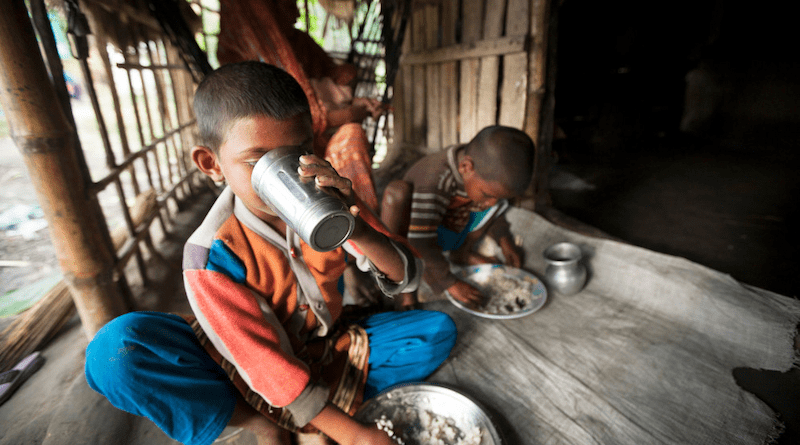Childhood Diarrhea Has Genetic Links, Study Finds
Susceptibility to diarrhoea, a major cause of infant deaths in low- and middle-income countries, has genetic links which could hold the key to new treatments, research suggests.
Diarrhoeal disease kills 525,000 children aged under-five each year, making it the second leading cause of death in that age group, according to the World Health Organization (WHO). The problem, prevalent in Africa, Asia and South America, is fuelled by poor sanitation and lack of access to clean drinking water.
Published 27 March in The Journal of Infectious Diseases, the study notes that many children, particularly in low- and middle-income countries, suffer from multiple bouts of diarrhoea during the first year of life, despite improvements in toilet facilities, clean water access, immunisation services and exclusive breastfeeding.
According to the researchers, although water-borne microorganisms cause diarrhoea, the frequency and duration of diarrhoeal disease among children facing similar exposure to them differs. This suggests other factors at play.
“We have shown for the first time a genetic association of diarrhoea in children,” says Rashidul Haque, co-author of the study and affiliated with the International Centre for Diarrhoeal Disease Research in Bangladesh.
An understanding of the genetic basis of diarrhoea in young children “may provide targets for treatment and prevention”, Haque explains to SciDev.Net the significance of the findings.
“We evaluated human genetic variants in infants with no diarrhoea to those with either many episodes of diarrhoea (six or more in the first year of life) or many days of diarrhoea (25 or more in the first year of life),” says Rebecca Munday, first author of the study and a PhD candidate in the human genetics programme at the US-based Johns Hopkins University School of Medicine.
Munday explains that all the children involved in the study were from an urban slum in Dhaka, Bangladesh and exposed to many pathogens throughout their first year of life.
The researchers found human genetic variants in or near three specific genes which were more common in children with no diarrhoea, suggesting that protection from diarrhoea may be accorded by these genes identified as SAMD12, NCAM2 and WSCD1.
They found an association with genes involved in enteric (intestinal) nervous system development and intestinal inflammation, which they say potentially could be targets for diarrhoea therapeutics, or treatments.
“[These genetic] variants were discovered because of the intense exposure these infants had to different pathogens, and yet they still did not have a reported diarrhoeal infection in the first year of life,” Munday tells SciDev.Net.
“These three novel protective [genetic] variants could lead to potential therapeutic targets for all young children to prevent diarrhoeal infection.”
The authors admitted to limitations in the study arising from the fact that children get diarrhoea for different reasons, including pathogens, stress, dietary changes, and bowel disorders and they could not evaluate the cause in each case.
Chiranjib Chakraborty, professor at the School of Life Science and Biotechnology at Adamas University, Kolkata, India, tells SciDev.Net: “The study model can help to explore infant diarrhoea frequency and duration and their genome-wide association.”
He agrees it could help develop better therapeutics, and adds: “It can also help understand the genome-wide association with other infectious diseases.”
Sanjeet Bagcchi is a private medical practitioner with extensive writing experience, including for the British Medical Journal, Lancet, Canadian Medical Association Journal, Plos Biology, The Telegraph, Nature India, among others.
This piece was produced by SciDev.Net’s Asia & Pacific desk.

